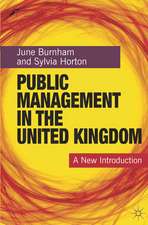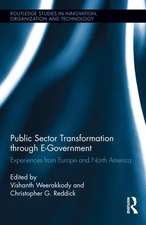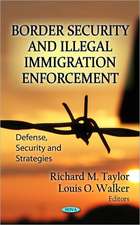Surface Transportation Congestion
Autor William J. Malletten Limba Engleză Paperback – 30 sep 2008
Preț: 289.70 lei
Preț vechi: 391.41 lei
-26% Nou
Puncte Express: 435
Preț estimativ în valută:
55.44€ • 58.14$ • 46.15£
55.44€ • 58.14$ • 46.15£
Carte disponibilă
Livrare economică 11-25 martie
Preluare comenzi: 021 569.72.76
Specificații
ISBN-13: 9781604568851
ISBN-10: 1604568852
Pagini: 88
Ilustrații: tables & charts
Dimensiuni: 132 x 213 x 7 mm
Greutate: 0.16 kg
Ediția:New.
Editura: Nova Science Publishers Inc
ISBN-10: 1604568852
Pagini: 88
Ilustrații: tables & charts
Dimensiuni: 132 x 213 x 7 mm
Greutate: 0.16 kg
Ediția:New.
Editura: Nova Science Publishers Inc
Cuprins
Preface; Transportation Spending Levels; Transportation Spending Priorities; Congestion Pricing and Other Alternative Ways to Ration Resources; Brief History of Transportation Congestion; Highway Transportation; Public Transportation; Freight Transportation; Legislative History of Transportation Congestion; Intermodal Surface Transportation Efficiency Act of 1991 (P.L. 102-240); National Highway System Designation Act of 1995 (P.L. 104-59); Transportation Equity Act for the 21st Century (P.L. 105-178; P.L. 105-206); Safe, Accountable, Flexible, Efficient Transportation Equity Act A Legacy for Users (P.L. 109-59); Transportation Congestion: Concepts, Measures, and Trends; Measures and Trends in Road Traffic Congestion; Current Trends in Road Traffic Congestion; Interurban Road Traffic Congestion; Road Bottlenecks; Road Congestion at International Gateways; Measures and Trends of Congestion in Public Transit; Measures and Trends of Congestion in Rail; Freight Rail Congestion Measures; Trends in Freight Rail Congestion; Intercity Passenger Rail (Amtrak) Congestion Measures; Intercity Passenger Rail (Amtrak) Congestion Trends; The Costs of Transportation Congestion; Transportation Congestion Remedies; Operating Existing Capacity More Effectively; Managing Demand; Congestion Pricing; Land Use Strategies; Institutional Issues; Expanding Rail Capacity; Intermodalism in Freight Transportation; Concluding Observations; Index.














